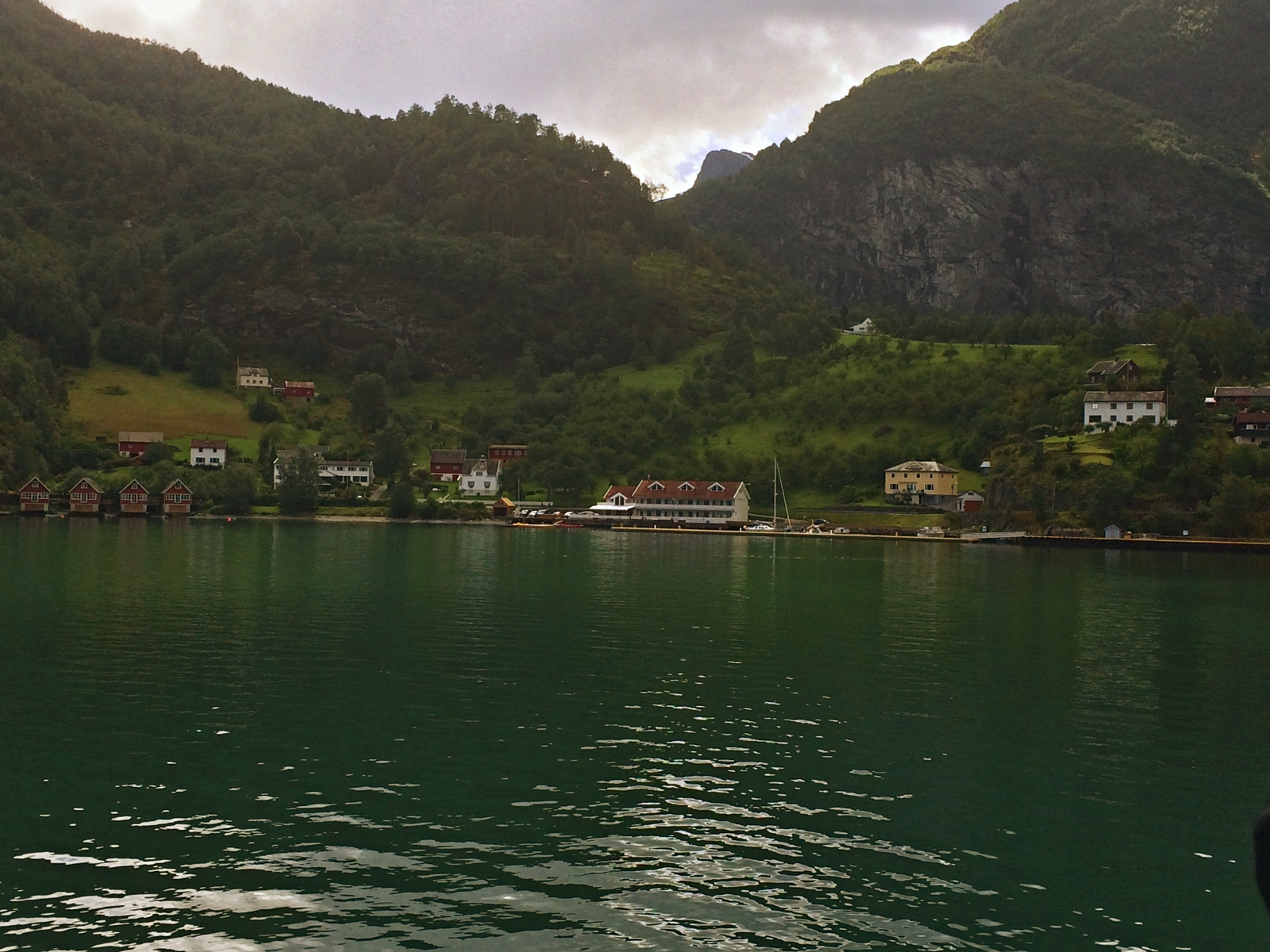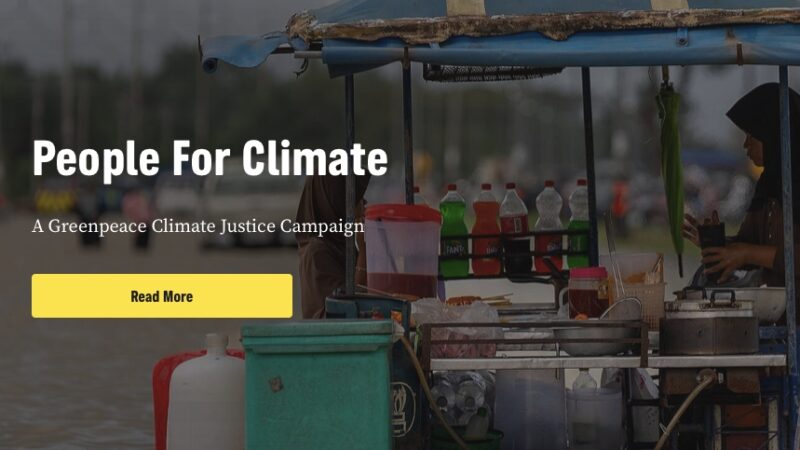Backpacking For The Planet – Take Memories, Leave Footprints
Regenerative tourism is based on the idea that you can help to regenerate the world around you by travelling, staying local and supporting local culture. It encourages people to take only memories and leave only footprints.
When a friend asked me to help clean up a section of a Mumbai beach a few years ago, I pondered how much of a difference it would make. I was aware that more people would contaminate it the following day. As I joined in and we picked up one plastic bottle after another and other trash on the beach, it became clear how badly we were exploiting the planet and doing very little to keep it clean. But it wasn’t until my first visit to Norway a few years back that I realised what it meant to be an active participant in regenerating the world around us.

It is a simple idea, but surprisingly difficult to grasp. Most people are unaware of how much they contribute to their environment until they see how much damage they cause—and then they are horrified by how much work is required to restore it. But here’s where regenerative tourism comes in: if you want your home to feel special, try leaving it in better condition than when you left. Chances are, you’ve heard the term “regenerative tourism” being tossed around a lot lately. Though the concept is not new, it seems to be having a moment as people search for more sustainable and ethical ways to travel in the post Covid world. But is it something you should be interested in?

Honestly, I had no idea what many people were doing to make a significant contribution to keeping the earth clean for all of us until I started travelling the world. During my trip to Scandinavia, I realised the value of cleanliness. The Nordic countries, Sweden and Norway, have long been praised for their commitment to sustainable living. They coexist with nature, taking only what they require to survive and using every resource around them with care and respect, from building their homes out of wood to harvesting crops. It is their way of expressing gratitude for the beautiful land they live on. Behaviour that they unwittingly encourage.
Sweden has embraced the concept of ecological sustainability since the 1970s, while simultaneously Norway adopted the model into its economy, society, and environment. In Sweden, I took notice of a focus on renewable energy sources. The country has invested in solar and wind energy and is constantly developing other renewable energy sources. I was astounded by their national plan to reduce their carbon footprint and implement incentives for citizens to purchase electric vehicles. They have also implemented a carbon tax, which has resulted in a reduction in emissions. Norway, too, has made significant investments in the development of electric vehicles, intending to have all cars run on electricity by 2025. Their emphasis is on lowering emissions by investing in green technology.
These two countries introduced me to the idea of eco-friendly living by reducing ecological footprints. On a quiet Sunday morning in Norway, I awoke with a renewed sense of purpose. I resolved to live a more sustainable lifestyle by reducing my consumption. Since then, I’ve been buying locally sourced food, organic clothes and recycling almost everything I can. I’ve also become more involved in my community. I think the easiest way to go around regenerative tourism is to volunteer at a local recycling centre, join a community garden and encourage others to make sustainable choices as well.
You can also start a composting program to reduce the amount of waste one produces. One of my favourite things about travelling is when I learn something new about myself through someone else’s perspective or experience—it’s like being able to see life through another person’s eyes. It’s also an opportunity to make a difference in your own life, whether it’s learning about how our planet works or helping others. For instance, upon my return from Scandinavia, I began growing fruits and vegetables at home and helping others learn about sustainable living so that they make more informed decisions about their consumption and are more aware of their impact on the environment.
While Travelling for me is about discovering new places and cultures. It’s also about being in balance with our planet—being aware of what I am doing on the road to make it sustainable for my loved ones back home. One way to do this is by choosing regenerative tourism, which focuses on supporting local economies in the places that we visit. Encouraging conservation awareness among travellers helps create economic development opportunities for locals while minimising negative environmental impacts.
Sustainable travel has several benefits, including getting a chance to see places that aren’t on most tourist itineraries, like remote villages in the forest or beaches on islands off the coast of South America. You’ll be supporting local economies instead of just visiting them for a couple of hours before going home again. For example, if you stay at an eco-lodge in Costa Rica during your vacation there—and even if you don’t—you’ll have spent money locally rather than at an expensive resort hotel back home.
Another way is to start picking up litter on your way; and set an example for others. Initially, I did get some strange looks from locals and tourists who have seen what happens when people don’t care about the environment around them; however, those same people will probably be happy for future generations because of all of the improvements made by those who came before them.
Travelling is an opportunity for us to take care of our planet. Regenerative tourism includes taking steps to reduce our impact on the environment: using public transportation instead of driving; recycling at hostels or hotels; buying souvenirs made from recycled materials; planting trees in new places so they don’t die out because of development around them. It is a movement, also known as “backpacking for the planet,” and it’s basically travelling sustainably by choosing natural paths and staying in eco-friendly lodges. But when you go on a regenerative trip, you’re not just providing a financial boost to the local community and its businesses. You’re also investing in the long-term health of the environment.
Think about it: When you visit a place that’s been ravaged by tourism, what do you see? Unused hotel rooms trashed beaches and emptied coral reefs. All of that takes a toll on the environment, which tourism-dependent communities can barely afford to cope with.
There are three key elements to regenerative tourism: sustainable, ethical, and responsible practices. Sustainable practices mean that the tourism industry minimises its environmental impact while preserving the natural and cultural resources of the destination. Ethical practices refer to the way businesses and tourists treat the people they encounter while travelling. And responsible practices encompass all sorts of things, from financial transparency to cultural sensitivity. All of these elements work together to create a tourism experience that is mindful of the social and environmental consequences of our actions.
Conversely, when you visit a place that embraces sustainable or regenerative tourism, you see thriving local businesses, pristine beaches, and healthy coral reefs. That’s because the money you spend is going directly into preserving and protecting the environment. So not only are you getting an amazing travel experience, but you’re also helping to make the world a better place.
There are plenty of examples of regenerative initiatives out there, both big and small. A great example is the “Back Home” program in Costa Rica. This program places volunteers who travel to Costa Rica with local families, and they work together to create sustainable livelihoods, such as natural building projects with local materials, or permaculture gardens to diversify food sources.
“About Water” is another fantastic initiative. This project brings together travellers and locals in India to protect water resources and involves educating communities about issues related to water conservation. They also partner with non-profits working on water-related issues and support their projects.
Finally, there are the “Friends of The Indian Ocean” initiative by a nonprofit organisation that works to protect this precious ocean from overfishing through a variety of different projects. Here you can join a beach clean-up expedition and help keep this ocean safe for generations to come.
Once you’ve decided to take the leap and go regenerative, here’s how you can get started. One of the first steps is to stay local. Seek out locally-owned businesses both before you travel and while you’re there. Not only will it support locals in the area, but it’s also a great way to learn about the culture and get an authentic experience. Another way to be a responsible traveller is to reduce waste. Ask your tour guides what opportunities exist in the area. Finally, find out if the destination has a commitment to sustainability by researching their environmental policies – this includes things like reducing emissions and conserving water sources. Making sure that you’re choosing operators who prioritise sustainability can help make sure your trip has long-lasting positive impacts on local communities and ecosystems.
Some of the countries that are embracing regenerative tourism include Costa Rica, Colombia, Bhutan, Sri Lanka, and Iceland. Costa Rica has established strict rules to ensure that the environment is preserved and has promoted the regeneration of its forests, wildlife, and local communities. Colombia has created a regenerative tourism program that focuses on the conservation of its rich biodiversity and cultural heritage.
Bhutan is another dream destination for regenerative tourism. The Himalayan country is taking measures to ensure that tourists can explore the area without damaging the local environment. Its efforts include limiting the number of visitors allowed each year and encouraging sustainable transportation.
Iceland has implemented a regenerative tourism strategy that focuses on minimising the environmental impacts of tourism while providing meaningful visitor experiences. These countries serve as shining examples of how regenerative tourism can be successfully implemented. During my multiple visits to Sri Lanka, my first-hand experiences led me to see how it is fast becoming a mecca for regenerative tourism projects, with initiatives designed to both promote sustainable living and boost the local economy. Kethala Eco-Village, a project focusing on sustainable agriculture, forestry, and eco-construction, was an intriguing experience. Then there was the trip to Kosgoda’s Turtle Hatchery, which works towards protecting endangered turtle species.
As the demand for more authentic and sustainable experiences continues to grow, regenerative tourism is poised to become a major player in the world’s future. The most important thing to remember when you travel is that you are an active participant in regenerating the world around you. You are not just a consumer of goods or services, but rather a collaborator who can help shape what happens on earth. Be a responsible traveller by planning and researching what kind of impact your trip will have on local communities and ecosystems before leaving home.
The world is a beautiful place, but it needs our help to stay that way. Start with buying crafts made by people you meet while travelling around town and supporting their work, rather than going to the mall where everything is made overseas. Leave only footprints and take only memories.



